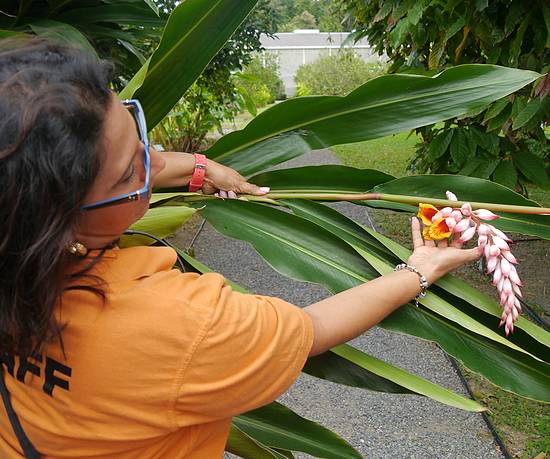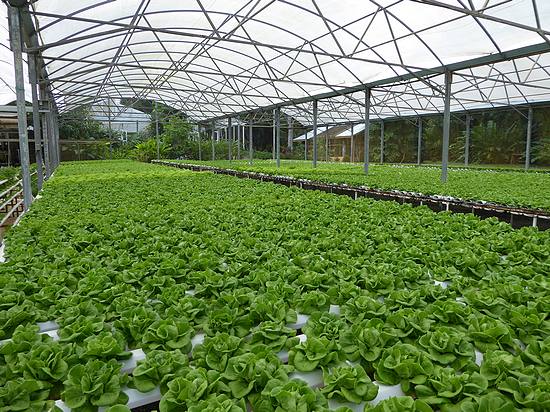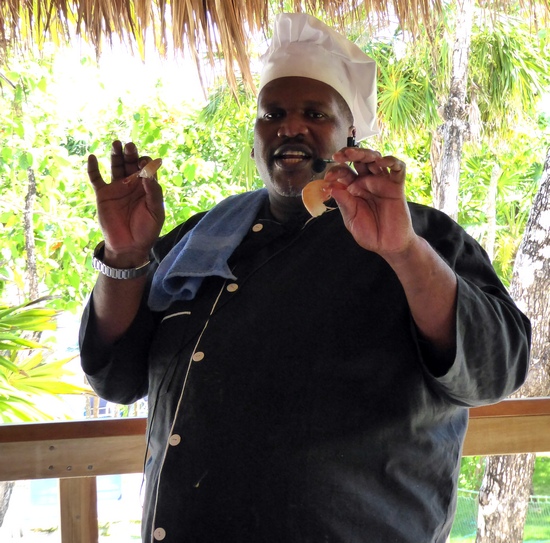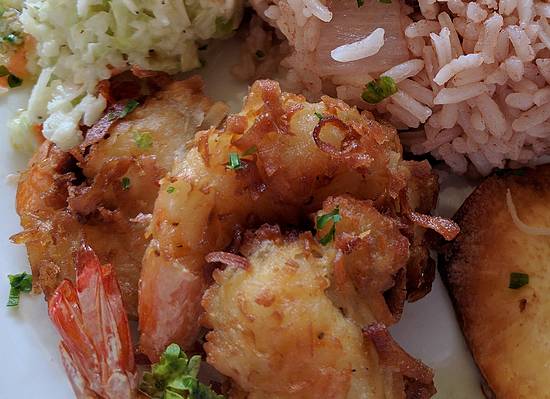
When Oceania Cruises (oceaniacruises.com) culinary director Kathryn Kelly designs the culinary shore excursions for Marina and her sister ships, she asks herself one essential question. “Where would I like to go if I had one day in this port?” she says. In Europe, the answer might be a visit to a winery or a three-star restaurant. In the western Caribbean, culinary expeditions are more likely to focus on local foods and foodways.
Arboretum looks to future of Roatán food
We joined Kelly for the “Honduran Farm & Ocean to Table Experience.” This shore excursion on the island of Roatán starts at the Blue Harbor Tropical Arboretum (blueharbortropicalarboretum.com). The plantings on this 160-acre property represent most of the economically significant plants of the growing zone, including several species of fruit trees. Walking through the grounds, general manager Ana Svoboda (above with ginger) points out familiar fruits like guava and mango and less familiar cacao, mangosteen, and custard apple. (Red cacao and coffee are among the key crops in Honduras, but coffee grows poorly at low altitude, so it’s not part of the arboretum.)
While the plantings represent Roatán’s botanical past, the facility’s extensive hydroponic farm is an investment in the future. Roatán is part of the MesoAmerican Reef system, second only to the Great Barrier Reef, so fresh water is at a premium. Hydroponics uses only 10 percent of the water required for conventional farming.
The farm focuses on high-value lettuce, other salad greens, and herbs. Annual production is 70-80,000 heads of lettuce alone. By growing in waist-height “rows,” the farm maximizes its succession crops. It harvests every 53 days. The organic produce—Blue Harbor uses organic fertilizers and no pesticides—is sold to local restaurants and supermarkets, and some to nearby islands. The facility also sells cashews and citrus fruits from the arboretum groves.
Going big on shrimp for cooking
Roatán is known for its succulent pink shrimp. The large, sweet, and almost iridescent species played a starring role in the cooking demonstration given by Chef Samuel, a quiet mountain of a man, on Big French Key. The chef bought them from fishermen setting their nets about 70 miles south. To show the versatility of the shrimp, he prepared them three ways.
He first made cocktail shrimp with an accompanying sauce. He prepared the shrimp by peeling away the shell, leaving just the tip of the tail. He cut down the groove in the back and removed and discarded the “vein,” or alimentary tract. He heated salted water to a boil, cut a large lime in half and squeezed half for its juice. He added both halves of the fruit to the water to cut the fishy flavor and aroma. The shrimp simmered just three minutes. The cocktail sauce was equally simple. He sautéed diced tomato, minced garlic, chopped onion, and parsley. When the mixture was cool, he added a small Scotch bonnet pepper and puréed in a blender.

His second preparation was garlic shrimp. In very hot oil in a frying pan, he quickly cooked some minced garlic to flavor the oil. The shrimp—again, shell off except for the tip of the tail—cooked up in just a minute or two.
As a final preparation, Chef Samuel made coconut shrimp. They were truly heavenly, in part because he grated a fresh coconut using a distinctive island-style grater. It consists of a large can punctured with nails to make sharp bumps, as shown in the photo above. It made quick work of the coconut. Chef Samuel dipped the shrimp in beer and milk-based tempura batter, rolled them in coconut shards, and deep-fried them in 375°F oil until golden brown. Wow!
Since most of us don’t have a deep fryer at home, Chef Kathryn Kelly has come up with this pan-fried version.
CHEF KELLY’S COCONUT SHRIMP
Serves 2
Ingredients
1/2 cup chickpea flour
2 eggs, beaten
1 cup bread crumbs (preferably panko)
1/4 cup dry shredded coconut
6 to 8 jumbo shrimp (10 to 12 count), deveined, whole with tail on
Sunflower or peanut oil, for frying
Lime wedges
Directions
Set out three small, shallow aluminum trays. Pour the flour in the first tray, the beaten eggs in the second, and the bread crumbs and coconut flakes in the third. Dry the shrimp with paper towels.
Dredge a shrimp in the flour. Gently shake off any excess. Dip the shrimp in the egg, turning the shrimp so it is completely coated. Dip the shrimp in the bread crumb and coconut mix, turning and pressing gently so it is completely coated. Repeat with the other shrimp. Allow the coated shrimp to rest and set for 15 minutes.
Line a plate with paper towels. Heat the oil in a medium sauté pan over medium-high heat. Oil depth should be half the thickness of the shrimp. When the oil is hot (365°F to 375°F), carefully place the shrimp in the pan and fry until the bottom halves are golden brown, about 3 to 4 minutes. Carefully turn the shrimp and fry until the other halves are golden brown, about 3 to 4 more minutes. Transfer the shrimp to the towel-lined plate to drain. Serve with chili garlic sauce (easily found at the grocery store), lime wedges on the side, and enjoy!



